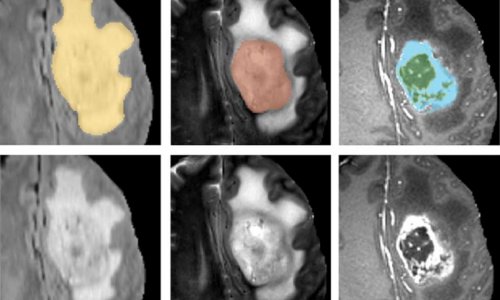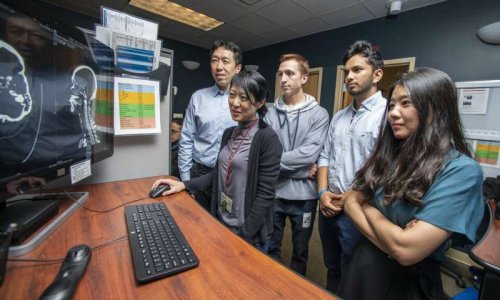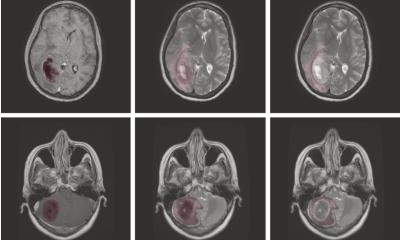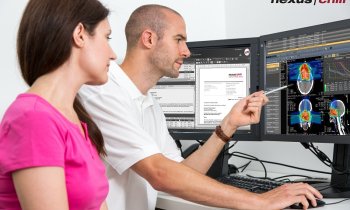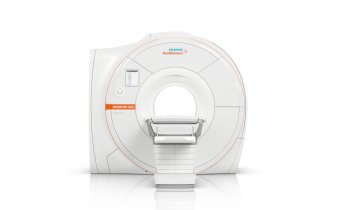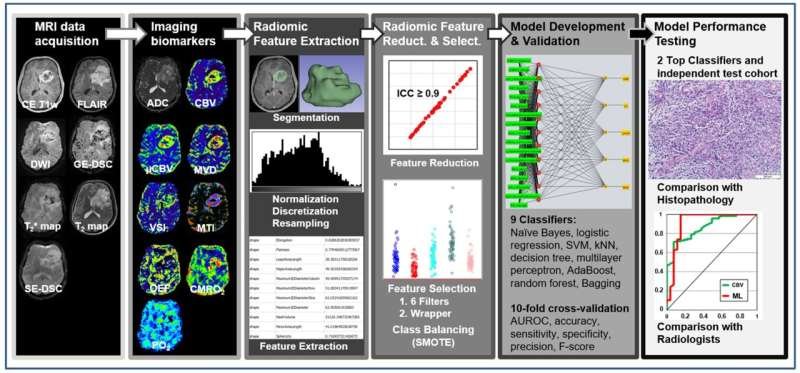
Credit: Cancers (2022). DOI: 10.3390/cancers14102363
News • Radiophysiomics
Diagnosing brain tumors using machine learning
The classification of brain tumors—and thus the choice of optimal treatment options—can become more accurate and precise through the use of artificial intelligence in combination with physiological imaging. This is the result of an extensive study published in Cancers and conducted by the Karl Landsteiner University for Health Sciences (KL Krems).
Brain tumors can be easily detected by magnetic resonance imaging (MRI), but their exact classification is difficult. Yet that's precisely what's crucial for choosing the best possible treatment options. Now, an international team led by KL Krems has used data from modern MRI methods as the basis for machine learning (ML) protocols and assessed the use of artificial intelligence to classify brain tumors. The results were then compared with classifications made by human experts. Artificial intelligence was found to be superior in the areas of accuracy, precision and misclassification, among others, while professionals performed better in sensitivity and specificity.
More MRI, more data
The team led by Prof. Andreas Stadlbauer, a scientist at the Central Institute for Medical Radiology Diagnostics at St. Pölten University Hospital, used both advanced and physiological MRI data for the study. Both methods provide enhanced insight into the structure and metabolism of a brain tumor and have allowed better classification for some time. But the price to pay for such a differentiated picture is enormous amounts of data that need to be expertly assessed. "We have now analyzed whether and how an artificial intelligence using ML can be enabled to support trained professionals in this Herculean task," explains Prof. Stadlbauer. "And the results are very promising. When it comes to accuracy, precision and avoiding misclassification, an AI can classify brain tumors well using MRI data."
To achieve their impressive result, the team trained nine well-known Multiclass ML algorithms with MRI data from 167 previous patients who had one of the five most common brain tumors and had accurate classification using histology. A total of 135 so-called classifiers were generated in a complex protocol. These are mathematical functions that assign the material to be examined to specific categories. "In contrast to previous studies, we also took into account data from physiological MRIs," explains Prof. Stadlbauer. "This included details on the vascular architecture of the tumors and their formation of new vessels, as well as the supply of oxygen to the tumor tissue."
Radiophysionomics
The team named the combination of data from different MRI methods with multiclass ML "radiophysiomics." It's a term that's likely to catch on quickly, as the potential of this approach became apparent in the second part of the project, the testing phase. In this, the now-trained multiclass ML algorithms were fed with corresponding MRI data from 20 current brain tumor patients and the results of the classifications thus obtained were compared with those of two certified radiologists. Thereby, the two best ML algorithms (referred to as "adaptive boosting" and "random forest"), outperformed the human assessment results in the areas of accuracy and precision. Also, these ML algorithms resulted in less misclassification than by the professionals (5 versus 6). On the other hand, when it came to the sensitivity and specificity of the assessment, the human assessments proved to be more accurate than the AI tested.
"This also makes it clear," says Prof. Stadlbauer, "that the ML approach should not be a substitute for classification by qualified personnel, but rather a supplement to it. In addition, the time and effort required for this approach is currently still very high. But it offers a possibility whose potential should be further pursued for everyday clinical use." Overall, this study again demonstrates the focus of research at KL Krems on fundamental findings with real clinical added value.
Source: Karl Landsteiner University
24.06.2022



